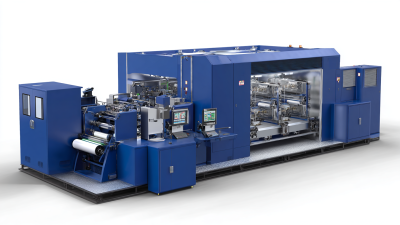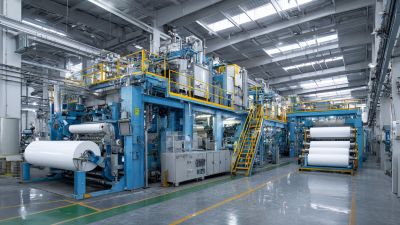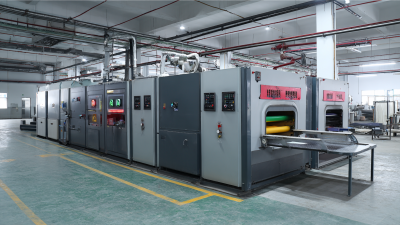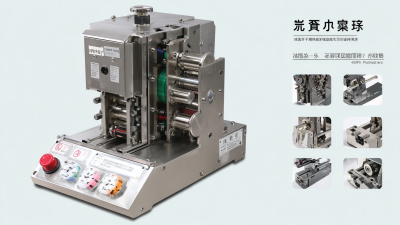Leave Your Message
The textile industry is undergoing a transformative shift as manufacturers seek to enhance productivity and reduce operational costs. Central to this evolution is the emergence of the High Speed Carding Machine, a technological marvel that integrates advanced digital solutions with the best practices in carding processes. This innovation not only streamlines the production cycle but also significantly improves the quality of the fiber output, resulting in increased efficiency across various textile applications.

As companies strive to meet the growing demands of the market while adhering to sustainability initiatives, the High Speed Carding Machine stands out as a pivotal tool in redefining the standards of textile production. By leveraging the power of digital technology alongside this cutting-edge machinery, manufacturers can unlock new levels of performance and innovation in their operations, paving the way for a more agile and responsive textile industry.
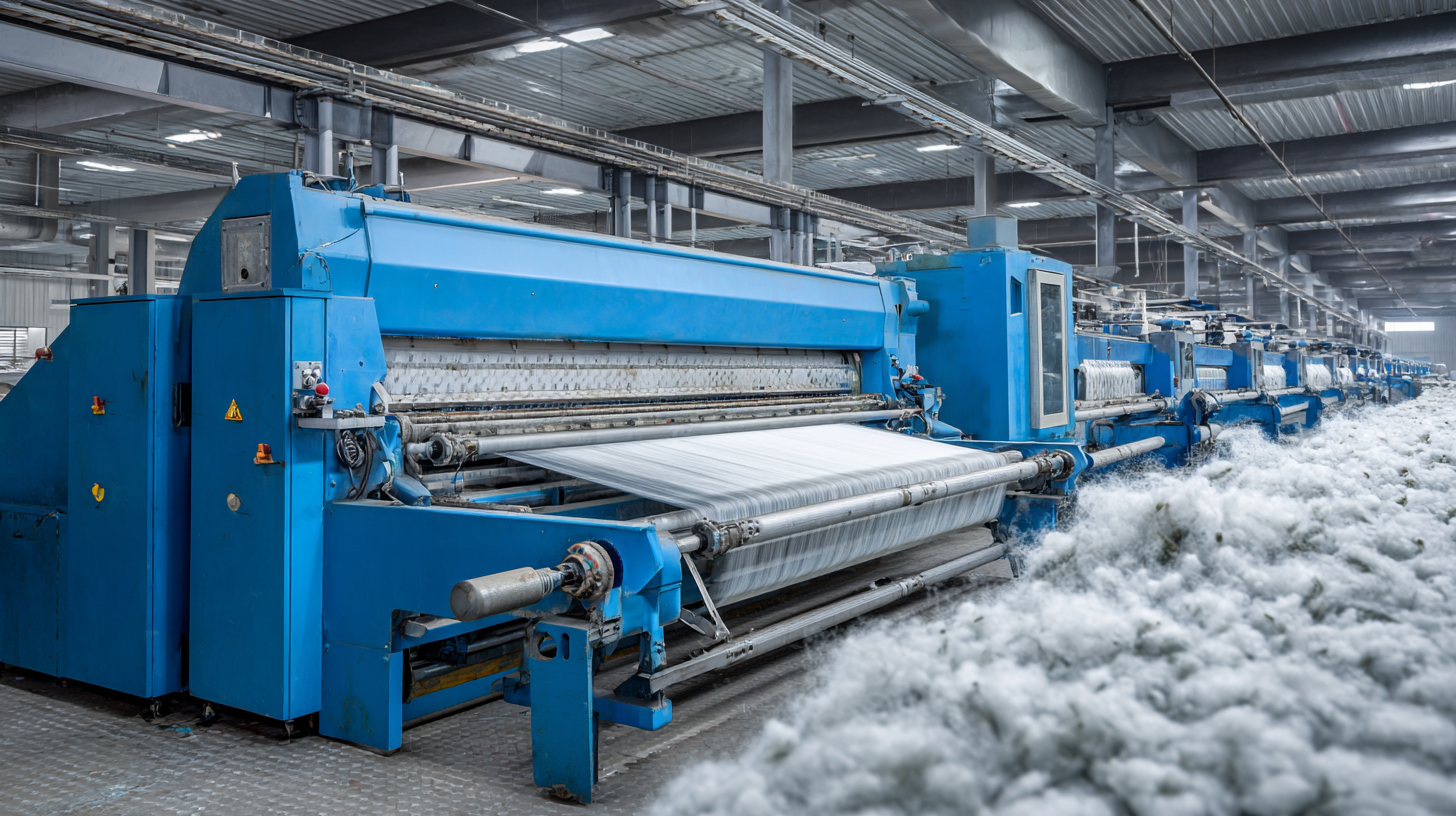 High-speed carding machines are revolutionizing the textile production landscape by significantly enhancing efficiency and productivity. These state-of-the-art machines utilize advanced technology to process cotton, wool, and synthetic fibers at unprecedented speeds. The improved design of high-speed carding machines minimizes downtime and maximizes output, allowing manufacturers to meet the rising demand for textiles in various sectors. This transformation not only streamlines the production process but also reduces labor costs, enabling companies to allocate resources more effectively.
High-speed carding machines are revolutionizing the textile production landscape by significantly enhancing efficiency and productivity. These state-of-the-art machines utilize advanced technology to process cotton, wool, and synthetic fibers at unprecedented speeds. The improved design of high-speed carding machines minimizes downtime and maximizes output, allowing manufacturers to meet the rising demand for textiles in various sectors. This transformation not only streamlines the production process but also reduces labor costs, enabling companies to allocate resources more effectively.
Moreover, the innovations in high-speed carding technology contribute to superior fiber quality. By employing precise control mechanisms, these machines ensure even distribution and optimum blending of fibers, resulting in consistent and high-quality yarns. This attention to quality is essential in today's competitive market, where consumers increasingly prioritize durability and comfort in textiles. As manufacturers embrace high-speed carding machines, they are not only improving efficiency but also gaining a significant edge in quality, ultimately leading to greater customer satisfaction and loyalty.
The textile industry has seen significant advancements in carding technologies, leading to enhanced speed and quality in production. Modern high-speed carding machines are engineered with innovative features that streamline processes and reduce operational costs. According to a recent report by MarketsandMarkets, the global textile machinery market is projected to grow from USD 10.3 billion in 2021 to USD 12.1 billion by 2026, driven largely by technological innovations in carding machines. These machines now utilize advanced automation and real-time monitoring systems, allowing manufacturers to achieve a faster production rate while maintaining high-quality yarn output.
Furthermore, key improvements such as enhanced fiber handling and more effective cleaning systems have been developed, resulting in better material efficiency. Research conducted by TechNavio highlights that the adoption of high-speed carding machines has improved production efficiency by up to 30%, while also significantly reducing waste—an important factor in the industry’s shift towards sustainability. As textile manufacturers continue to adopt these cutting-edge technologies, the overall quality of the end products is set to improve, meeting the evolving demands of consumers for not only speed but also superior textile performance.
High-speed carding machines represent a transformative innovation in textile production, allowing manufacturers to significantly enhance their operational efficiency. As the textile industry increasingly adopts digital technologies, the implementation of these machines not only streamlines the carding process but also reduces energy consumption and labor costs. According to industry reports, the use of advanced carding technology can improve production speeds by up to 30%, enabling manufacturers to meet the growing demand for high-quality fabrics without sacrificing speed or efficiency.
To maximize the benefits of high-speed carding machines, textile manufacturers should consider a few best practices. First, investing in training for operators ensures that they are equipped to handle advanced machinery safely and efficiently, reducing downtime and maintenance costs. Additionally, regular maintenance schedules can extend the lifespan of carding machines and prevent costly repairs.
Tips: Always stay updated on the latest technological advancements in carding machinery to ensure your operations remain competitive. Implementing a proactive maintenance strategy can save manufacturers up to 20% in costs related to unscheduled machine downtime. By effectively integrating high-speed carding machines into their production lines, textile manufacturers can position themselves for high-quality growth in an increasingly competitive global market.
This chart illustrates the efficiency improvements in textile production with the integration of high-speed carding machines. The data shows the average production output (in meters) measured over different time frames after implementing these machines.
The textile industry is ever-evolving, with innovations in machinery that significantly enhance production efficiency. Upgrading to high-speed carding machines represents a pivotal advancement in this field. These systems are designed to process fibers more rapidly and with greater precision, reducing the time taken to prepare materials for spinning. This acceleration not only boosts output but also minimizes operational bottlenecks that can arise from slower, outdated equipment.
In addition to improved speed, the cost benefits of transitioning to high-speed carding systems are substantial. While the initial investment may be higher, the enhanced productivity leads to lower unit costs of production. Energy efficiency is another critical factor; modern carding machines consume less power during operation, further contributing to reduced overhead expenses. Moreover, these machines often require less manual intervention, allowing for a leaner workforce and decreasing labor costs over time. Ultimately, the long-term savings and increased competitiveness in the marketplace make upgrading to high-speed carding systems a financially sound decision for textile manufacturers.
The future of carding technology in textile production looks promising, driven by innovations that enhance both speed and efficiency. As the industry shifts towards sustainability, new carding machines are designed with energy-saving features and materials that minimize waste. These machines employ advanced algorithms and automation, allowing for real-time adjustments during the carding process, which increases output while reducing errors and downtime.
Additionally, the integration of smart technologies, such as IoT devices and AI, is poised to revolutionize carding. These innovations enable manufacturers to gather and analyze data, optimizing machine performance and maintenance schedules. Furthermore, advancements in fiber manipulation techniques will allow for greater versatility in fabric production, catering to evolving consumer demands for unique textures and blends. As these trends unfold, the textile industry is set to embrace a new era of efficiency and creativity, driven by cutting-edge carding technology.

